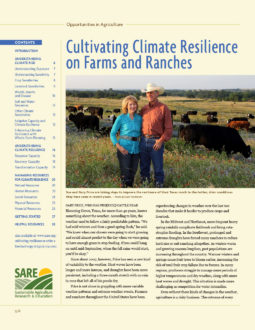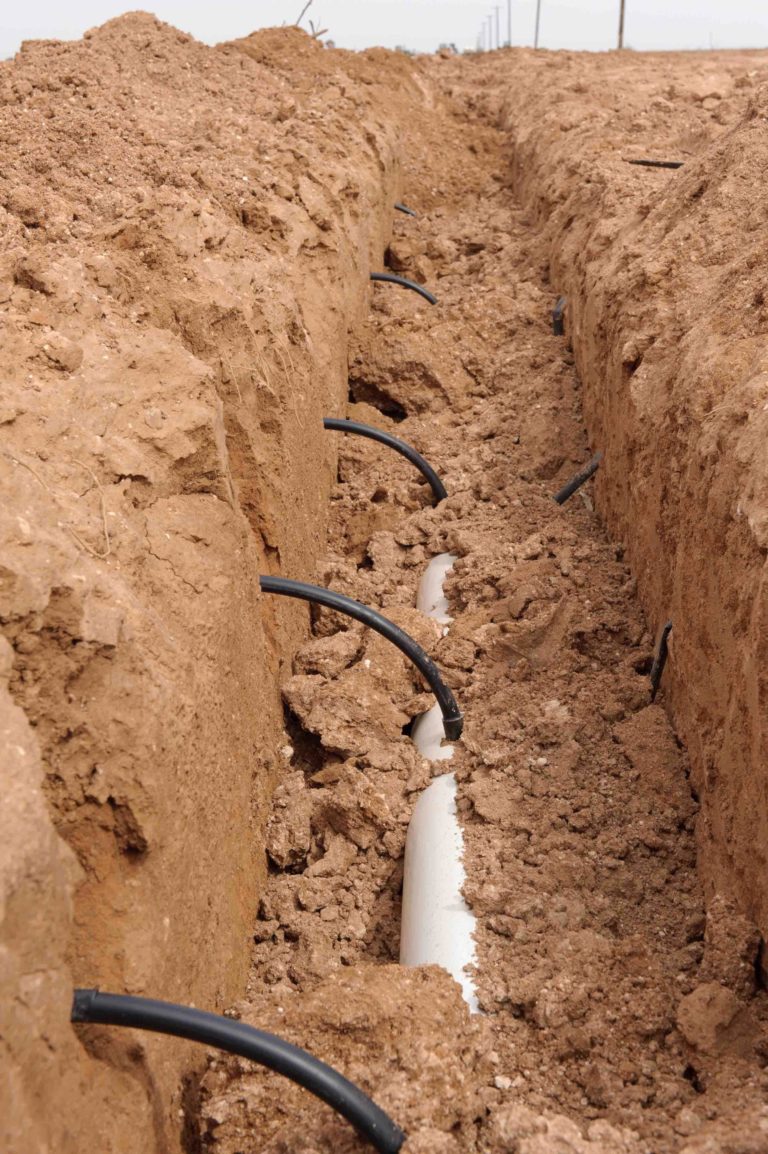Soil and Water Resources
Russ Zenner has been farming in the Palouse region of Idaho, near the town of Genesee, for more than 40 years. He manages 2,800 dryland acres in a three-year rotation of winter wheat, spring grains and spring broadleaf crops. More rainfall in the spring and drier conditions in late summer and fall have complicated crop management for him. During the record-breaking wet spring of 2011, Zenner believes he created some compaction problems by planting on soils that were extremely wet, and he has been struggling to restore those soils ever since. He thinks that the damage done in 2011 has increased the incidence of soil-borne diseases on his farm.
Along with the potential to degrade soil health, longer growing seasons and warmer winters also increase the potential for soil nutrient losses by extending active nutrient cycling by soil microorganisms into the winter months. This longer window of soil nutrient availability increases the risk of nutrients leaching to groundwater, particularly during periods of heavy rainfall. More frequent and extreme rains will also increase the loading of nutrients, sediments and pesticides into surface waterways, especially if producers use more fertilizer and pesticide inputs in response to increased weather-related uncertainties.
In addition to soil and water quality concerns, water availability is widely recognized as the most critical near-term resource sensitivity for agriculture. More frequent and intense extremes of temperature and precipitation, along with increased variability, are already creating significant disruptions in water supplies throughout the country. This challenge is expected to grow more pronounced in coming years. Rising temperatures and shifting precipitation patterns have begun to alter the patterns of agricultural demand for water, as well as its availability and cost, throughout the United States.
Managing Temperature and Moisture Extremes
The effects of temperature and moisture extremes, which are expected to increase in frequency and intensity over the next 30 years, can be very difficult to manage. Heavy rainfall can interfere with field operations and cause labor issues, degrade soil health, threaten crops and livestock, and damage farm infrastructure. Drought can be challenging even with irrigation if access to a sufficient supply of water is threatened by climate change. Extremes of temperature and precipitation are often accompanied by other weather extremes, such as high winds or hail, creating a greater challenge than either extreme alone. In general, farms and ranches with lower sensitivity to extremes of temperature and moisture will have:
- healthy soils with a high infiltration rate and water-holding capacity
- healthy crops and livestock, including species, cultivars and breeds that can tolerate local weather extremes
- access to physical resources—such as housing, season extension structures, irrigation systems, frost protection, drainage, windbreaks, shaded areas, riparian areas and wetlands—that can buffer temperature and moisture extremes, especially during the most sensitive stages of plant and animal development
- managers with experience managing dryland production systems and/or irrigation
Jacquie Monroe, the third generation to own and manage Monroe Family Farms, has been struggling with water shortages for almost 20 years. The 200-acre farm, which produces vegetables and all the pasture, hay and feed grains needed to raise beef, pork, lamb and eggs, is located northeast of Denver, the fastest-growing large city in the United States. “We have been in and out of a drought since 1998, more in a drought than out, so water out here is everything,” she said. “We have to irrigate in order to get a crop, so water is a huge problem.”
Monroe’s 22-year-old son is weighing the pros and cons of joining his parents in the farm business. He would like to become the fourth generation on the farm, but competition for water in the region makes it difficult to imagine a lifetime in farming. “We are very concerned about our water rights and whether or not we’re going to be able to get our water in the future,” Monroe said. “The cities are buying the water off the farms and taking it back to the city. They say that 700,000 acres are supposed to be dried up in the next 10 or 15 years. It means that water will never go back to those farms. Once it’s gone, it’s gone forever.”
When it comes to water management, climate is not the only source of pressure on producers. In many parts of the country, they face competing societal demands for water as urban and residential populations grow and land-use patterns change. Some of the largest demand increases are projected in regions where groundwater is the main source of water, such as the Great Plains and parts of the Southwest and Southeast. Competition for water among agricultural, industrial and public uses has reduced water supplies to agriculture in the West and Southwest, and a similar situation is on the horizon in the relatively water-abundant Southeast.
Water and Climate Concerns on Washington State Dairy Farms
In this video produced through a SARE grant, Washington state dairy farmers, climate scientists and Extension specialists are interviewed to discuss farm management adaptations after experiencing the snow drought of 2015 that impacted water availability in their region.
Other Climate Sensitivities: Management, Operating and Maintenance Costs
Along with the challenges of managing new pests and diseases, changes in crop and livestock growth and development, shorter windows for timely fieldwork, more variable yields, and more competition for declining water resources, climate change will also increase operating, maintenance and overhead costs in many production systems. This will be due to reduced product quality and yields, production failures, loss of markets, and increased input and insurance costs. If current conditions create a high-stress production environment for you, your employees, your crops, your livestock or your customers, the additional challenges presented by climate risk may represent a key sensitivity of your operation.
In 2011, Jim Hayes’s Sap Bush Hollow Farm was right in the path of back-to-back hurricanes Irene and Lee that caused catastrophic flooding in South Central New York. The storms were an eye-opening experience for everyone in the community, said Hayes, particularly with respect to how quickly the road system in the area was destroyed. “The damage that those storms caused was very frightening,” he recalled. “That really reset our thinking.”
As a result, Hayes is actively working to identify and address major farm sensitivities to more variable and extreme weather, including disruptions to transport, power, feed, water and forage reserves, and loss of markets. His farm’s increased vulnerability to heavy rainfall and extreme weather “has come to be a major issue,” Hayes said. “We realize that these things aren’t going to go away.”

